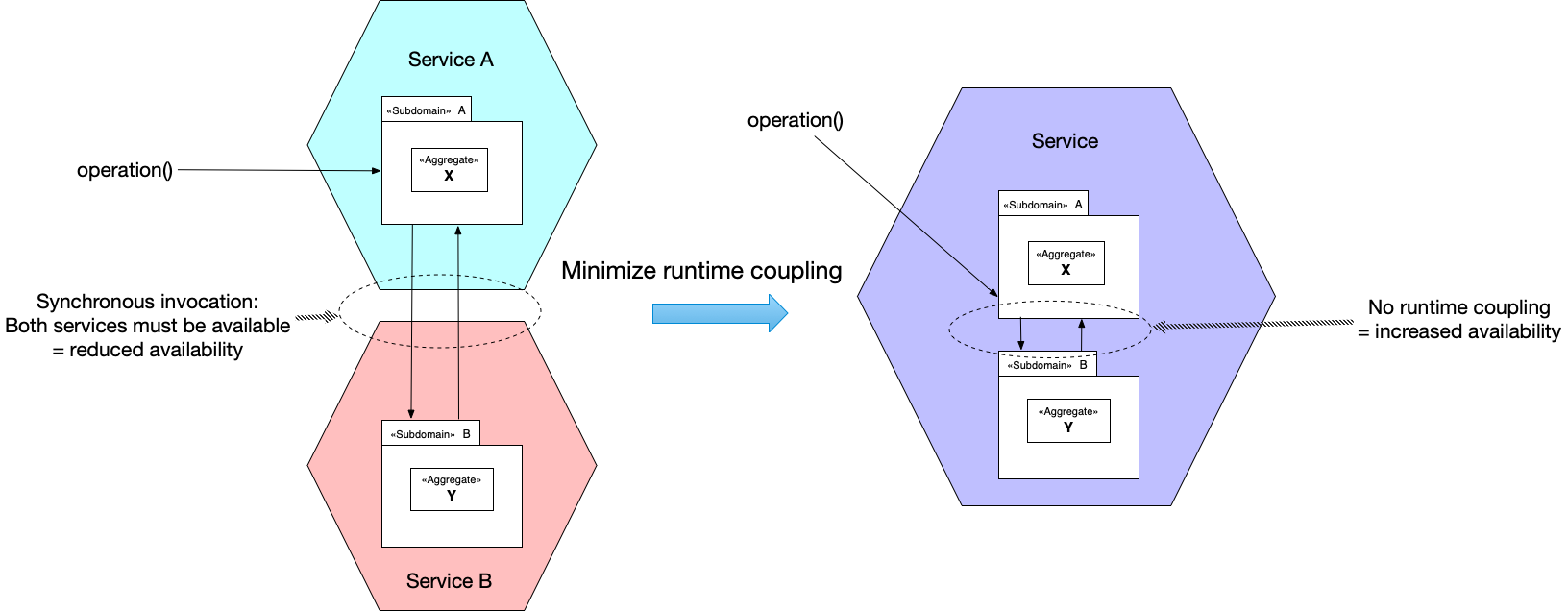Dark matter force: minimize runtime coupling
microservice architecture architecting dark energy and dark matter runtime couplingContact me for information about consulting and training at your company.
The MEAP for Microservices Patterns 2nd edition is now available
a dark energy, dark matter force

When designing an architecture it’s important to minimize runtime coupling, which can occur when an application consists of more than one component. Runtime coupling is the degree to which the availability of one service is affected by the availability of another service. Or to be more precise, the availability of an operation implemented by one service is affected by the availability of another service. Let’s look at why runtime coupling is a problem, how we can minimize it, and why it’s an attractive force between subdomains.
Runtime coupling reduces availability
For example, let’s imagine that the createOrder() system operation is implemented by an HTTP POST /orders endpoint in the Order Service.
The Order Service implements the operation by making a HTTP PUT /customers/{customerID}/availableCredit request to the Customer Service, and then sending a response to its client.
In this design, the Order Service cannot respond to the POST request until the Customer Service responds to it.
The Order Service (or createOrder() operation) is said to be runtime coupled to the Customer Service.
The availability of the createOrder() operation is reduced since both services must be available.
Colocate an operation’s subdomains to improve availability
The desire to minimize runtime coupling acts as an attractive force between an operation’s subdomains. A local operation has no runtime coupling because all of its subdomains are implemented by the same service. However, it’s not always possible to create a microservice architecture where all operations are local. As a result, some operations will be distributed and potentially suffer from runtime coupling. Fortunately, we can often avoid runtime coupling by designing self-contained services.
Avoiding runtime coupling by designing self-contained services
A service self-contained is a service that respond to a synchronous request with a partial outcome and then asynchronously complete the operation.
For example, the Order Service could respond to the HTTP POST /orders request with a 202 Accepted response and then initiate a Create Order Saga complete the operation.
This approach improves the availability of the Order Service.
The drawback is that it makes the client more complex since it must be able to handle partial outcomes and somehow determine the final outcome of the operation.


 Premium content now available for paid subscribers at
Premium content now available for paid subscribers at 




